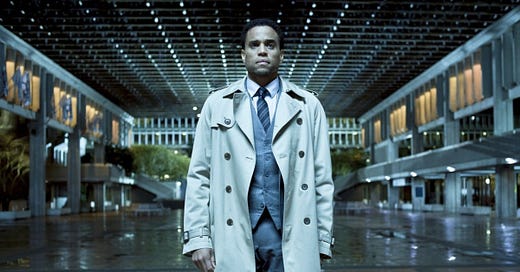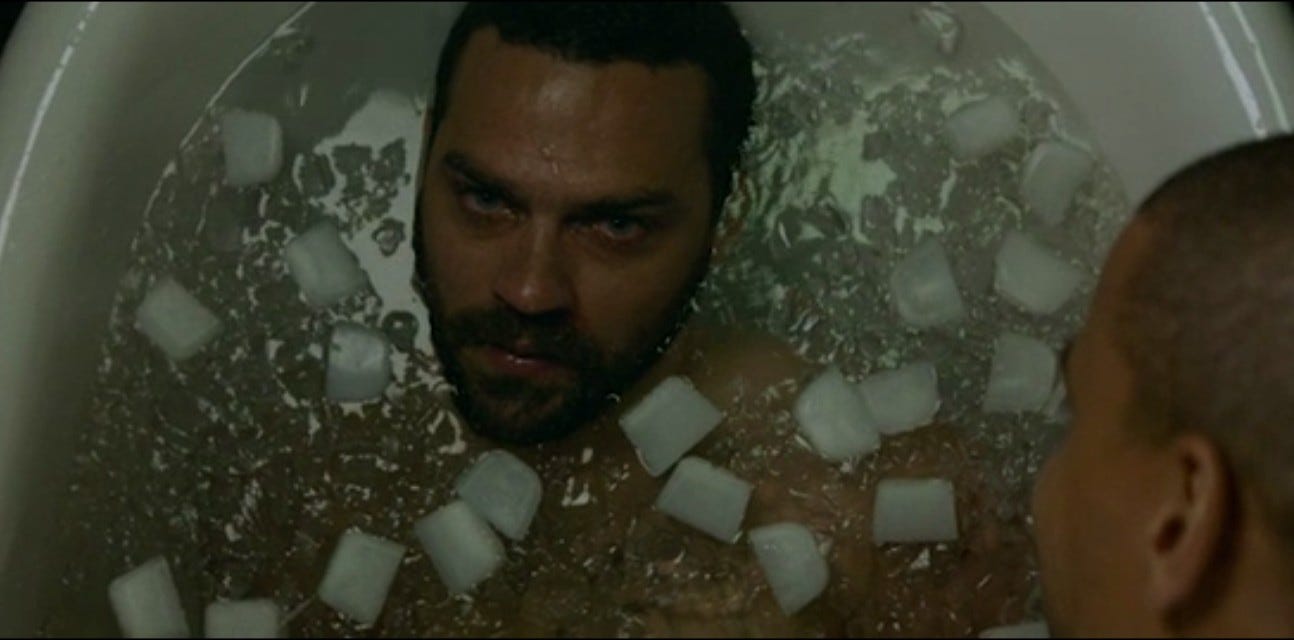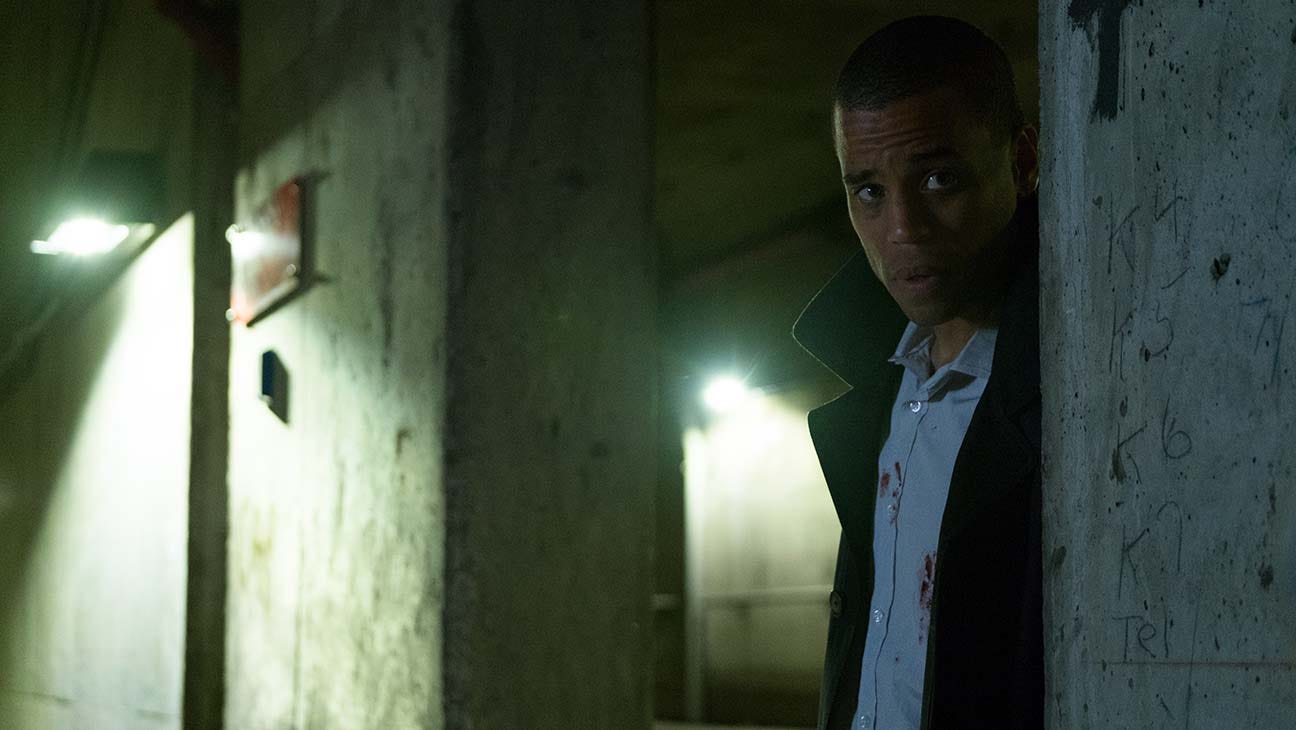A week of remakes begins now with a most-obscure choice. These are remakes between the years of 2014-2023, so obviously there’s no shortage. But it’s interesting to me how the choices of films to remake seem to have dried up. When I was in high school in the nineties, if you went back twenty years you’d find plenty of great studio and foreign movies to redo, probably poorly. But if someone today looks back twenty to twenty five years, there’s a vast wasteland of terrible popular movies, where executives would largely be remaking a titles moreso than an actual movie.
That leads audiences back to something like Adrian Lyne’s “Jacob’s Ladder”, hardly a box office smash and not an obvious critical hit. Myself, I admit I was someone who had very specific memories of the movie. I was raised in a cable-free household, so I was used to these Sunday edited-for-TV movie marathons. Its nightmarish visions were too unconventional to the sex-and-violence-averse TV censors. So much of that film would run unedited, and as a child, I wondered exactly what was it to make that movie seem so much more intense than whatever else played on those syndicated weekend movie blocks.
“Jacob’s Ladder” horrified me as a kid, this tale of a Vietnam vet unstuck within a hellscape where reality didn’t exist, and demons tormented him from formerly-safe spaces – his bathroom, his job, the subway. When I became an older teenager and began to go out and discover life, somehow I had forgotten all about “Jacob’s Ladder”. But all it took was a stray mention of the film in the early 00’s, and very suddenly the movie’s imagery flooded back into my memory. Somehow, I had been so scared of the movie as a young child that I had successfully blocked it out of existence for years. I’ve never felt the same about any other movie. In my early twenties, without revisiting “Jacob’s Ladder”, I suddenly found myself distracted by thoughts of that howling nurse with the lizard’s tail, the ghostly shaking faces in car windows, the mental institution with the eyeless nurses wielding giant syringes.
In prison, I watched actor Jesse Williams accept the Humanitarian Award at the 2016 BET Awards, carving into an incendiary speech holding powerful men accountable. It was a real stand-up-and-notice moment, since I had never previously acknowledged Williams’ work before, and he spoke fundamental truths about being Black in America. Shortly after, I read that his nerves had been shot during the time of the ceremony because of the Method approach he was using towards a “Jacob’s Ladder” remake. I waited, and waited, and waited for this movie. Eventually, in the 2020’s, I found out the movie had finally… escaped?... in 2019, quietly and with little attention. Far from deterring me, I grew only more curious.
The finished movie, certainly employing a lower budget, modernizes what was once a haunted post-Vietnam fable. Michael Ealy’s Jacob Singer is now an Afghanistan veteran who returns home to hard economic and social truths. He’s a medic, and his nightmares concern a dead brother who lost his life overseas. Or are they nightmares? Jacob soon realizes that his brother Ike (Williams) might not actually be Killed In Action, but is still living with his wife, struggling with PTSD. This movie starts almost immediately wrongfooting you, a great concept except that the movie never illustrates (or feigns at illustrating) a concrete world that is subverted by visions. Instead, you merely get two (or more) recreations of pretty similar lives.
One of the great bits in the original is when Jacob goes to work. Like all the “regular” places in that movie, the post office is overcrowded and oversized, with massively high ceilings and constantly-flickering lights. At that point in the film, you think, well, I’ve seen a lot of hallucinations, but this SEEMS like it could be the headquarters of a low-paying job, even if it seems creepy. The movie is constantly re-interpreting environments – rooms, cars, streets – into something not at all physically possible. This new film, in contrast, seems more about capturing concrete locations where Jacob might see a rather pedestrian, forgettable demonic vision.
Instead of an Agent Orange parallel to the original, the approach here is a more generic drug that was apparently used on certain soldiers. This is clearly a plot gimmick to repeat the ideas from the first film, but it’s never captured visually or even conceptually. A fellow soldier experiencing the same calamities is played by Joseph Siroka, but this is clearly superproducer Will Packer reaching into his repertory company for yet another limited performer. Williams, who I have since seen in a few movies, is nervy and spooky here in a supporting role. But the talk of him approaching his role in an immersive manner is lost in the final product. There’s no sign of that inner turmoil that got him on the BET Awards stage to speak his peace and challenge the status quo.
The odds were good this movie wouldn’t match up to the original, even before I found out that the release was delayed when the budget dried up. Like many abandoned movies, you wonder if they actually came back to fix or conclude anything. The sights in the original “Jacob’s Ladder” still horrify me today, but next-to-no effort is placed in creating powerful visuals for this film. The earlier film had monsters, usually with scaly skin or slithery tails. A character would stick out their hand, and you’d casually find out the skin was destroyed, melted, mutated. You get none of that here – it’s conceptually nightmarish instead of being actually nightmarish. In theory – you’re left with the actors and characters once this movie lets you down on spectacle, and none of that comes from an interesting place. Williams gets to be charismatic and malevolent in equal measures, but none of the other actors even register.
Of course, like most remakes, it also can’t avoid paying homage to the earlier film, in a way that reminds you, “Hey, remember that other movie?” Not only does it immediately take you out of the narrative, as if to say, “You are seen, watcher of the original,” but it’s not even an exciting echo. The original film has a saintly Danny Aiello as a physical therapist discussing his views on theology at a key point in the narrative. This film has a character repeat the same monologue verbatim, except it’s at the film’s midpoint at an arbitrary moment, and the delivery is monotone and disinterested. Maybe stop trying to remind us of the first movie and you can feel free to make it their own. If you’re movie’s any good, no one’s going to complain that you didn’t redo the Danny Aiello monologue.
I previously spoke about a court case in which I was involved in order to obtain damages for the prison’s mistreatment of my broken jaw. I had friends and family members excitedly speaking about a massive financial windfall. I was hopeful, but I reminded people that some people die in custody and their family doesn’t get a cent. The system exists to protect the system – the idea that one can sue the federal government, as I attempted, is wishful thinking.
The idea is based in the Eighth Amendment, which was buttressed by a “Bivens Claim”, regarding cruel and unusual punishment while in custody. Recently the Supreme Court tightened a lot of regulations in favorite of massive corporations, and Bivens’ claims are not suited to those who experienced a fatal or near-fatal condition, of which a broken jaw isn’t one (even though, technically it is). From this link, you can see the way in which they treat those whose lives end in custody – hardly better than anyone else. As I mentioned previously, when disasters happen, the prison attempts to isolate themselves from dead bodies instead of actually saving a life or providing relief to families.
If you are incarcerated and you’re in poor health, know that the Bureau Of Prisons will find a way to pin your eventual death on you. And when you die, don’t expect a sign of care or kindness from your captors. Your death in prison is good news; now a bed is freed up for a new arrival.








